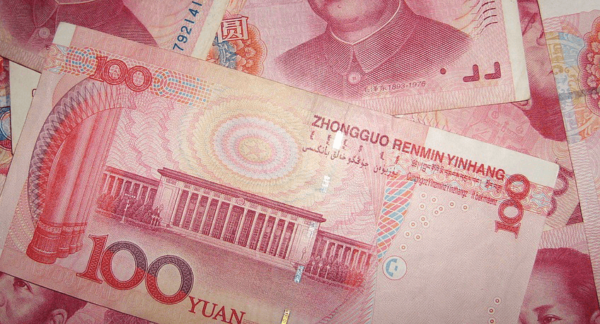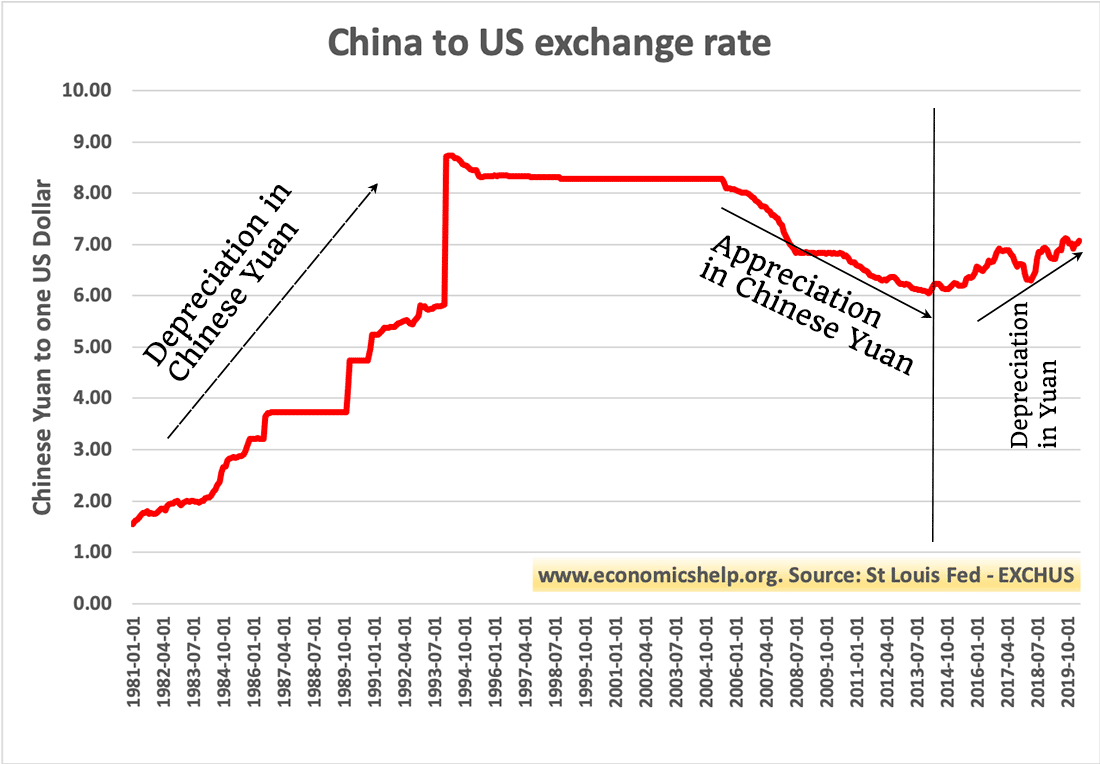- The Renminbi (RMB) is the name of the Chinese Currency. Renminbi roughly translates as ‘people’s currency’
- The Yuan refers to its unit of account.
So for example, we might use the following sentences
- The Renminbi is the 6th largest traded currency in 2006.
- The Chinese government issues a 100 Yuan note.
In practice, they can be used interchangeably, so we may talk about the appreciation of the Chinese Yuan when technically, we mean the appreciation of the Chinese Renminbi.

Chinese exchange rate
When talking about the Chinese exchange rate, we typically see the value of the Chinese Yuan against other currencies. This is because the Yuan has become used interchangeably with the Renminbi.
It would also be correct to say the value of the Chinese Renminbi to one dollar.
How has the Chinese Currency fared in the past four decades?

- From 1981 to 1984, there was a significant fall in the value of Chinese currency.
- From 1995 to 2005, the Chinese government kept the value fixed (some argue through currency manipulation – selling Yuan and buying dollars.
- From 2005 to 2014, state support for the Chinese currency was loosened and we say an appreciation in the currency.
- Since 2014, the Yuan has depreciated again.
Comparison with Pound Sterling
- The official name for the UK currency is Pound Sterling.
- But the unit of account for the UK currency is just Pound. For example, a five Pound note.
However, often in everyday use, you may talk about the value of the Pound to the dollar – Sterling is often left out. It is a similar situation that people talk about the Yuan, when technically speaking they are talking about the Chinese currency (Renminbi)
More detail on Yuan
In practical terms, the Yuan and Renminbi may be used interchangeably. For example, when people talk about the value of the Yuan to the dollar, we understand people are talking about the Chinese currency.
Yuan literally means ’round object’ or ’round coin. Colloquially, the Chinese Yuan is referred to as kuai – translating as ‘piece’. If you go into a Chinese shop, goods may be priced as kuai. (like in the UK we may say a good costs five quid, or in the US, people may say it is five bucks)
The Yuan can be broken into small units
- Jiao (10 Jiao per Yuan)
- Fen (100 Fen per Yuan)
Two Yuan
In foreign exchange markets, the code for the Chinese Renminbi is the CNY. But another complication is that China has two different measures of the Yuan
- CNY – the value of the Chinese Yuan on mainland China
- CNH – the value of the Chinese Yuan on offshore markets (Hong Kong, Singapore, London
The CNH is considered to be less controlled by government intervention, though in practice the two currencies are very close (within 2%). Foreign exchange analysts will trade in CNH as there are exchange restrictions on the CNY.
Personal note
When writing about the Chinese currency I often prefer to stick to writing ‘The Chinese currency’ rather than worry about whether it is Yuan or Renminbi. After research, I feel it is a mistake to worry too much. The Yuan is increasingly used interchangeably and seems slightly more common than Renminbi.
Related

